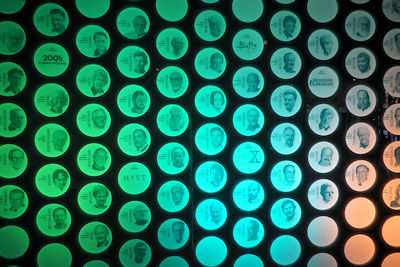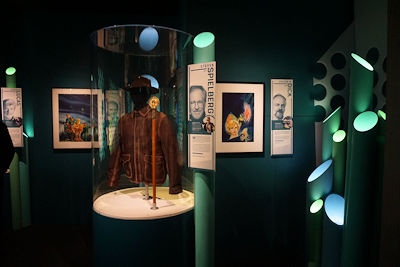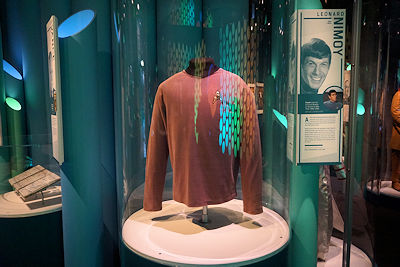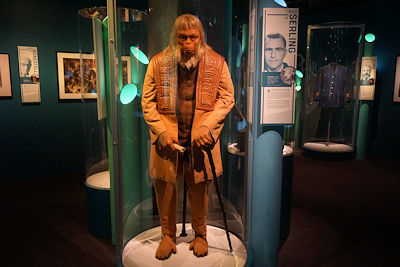
What do David Bowie and Philip K. Dick have in common? What about John Williams and Dungeons & Dragons? Jack Kirby and Steven Spielberg? Star Trek and Wonder Woman? George Lucas and Myst? Harlan Ellison and The Princess Bride?
In addition to being an eclectic group of writers, directors, games, films, and artists, each of these iconic mainstays of geek culture share one significant honor – induction into into the Science Fiction and Fantasy Hall of Fame located at the Museum of Pop Culture in Seattle, Washington.
Science fiction and fantasy have been literary genres for centuries, dating back to the publication of Mary Shelley’s Frankenstein in 1818 and the emergence of twin talents Jules Verne and H.G. Wells later that same century. The collection of stories known as The Arabian Nights and even Sir Francis Bacon’s New Atlantis have elements of sci-fi within them, and date back even further. Fantasy has a much longer tradition, meanwhile, with the works of Homer from Ancient Greece and the legend of King Arthur from Medieval Britain falling within the genre.
Because of the timeless nature of science fiction and fantasy, its influence on human history, and its growth in popularity during the twentieth century, the Kansas City Science Fiction and Fantasy Society teamed with the Center for the Study of Science Fiction at the University of Kansas to launch the Science Fiction and Fantasy Hall of Fame in 1996.
During its nine years in Kansas City, the Hall inducted eighteen members – all of whom were either writers or editors – including the aforementioned Mary Shelley, Jules Verne, and H.G. Wells, as well as Edgar Rice Burroughs, Ursula K. Le Guin, Arthur C. Clarke, and Ray Bradbury.
Hugo Gernsback – often considered the “father of science fiction” – was also an initial inductee. Although not a writer, it was Gernsback who published the first science fiction pulp magazine, Amazing Stories, in 1926. Not only did the pulps of the 1920s and 1930s embed an interest in science fiction in the minds of multiple generations, they also led to modern day geek culture and such staples as fan conventions and cosplay.
In 2004, the Science Fiction and Fantasy Hall of Fame moved from Kansas City to Seattle, where Microsoft co-founder Paul Allen had already launched the Experience Music Project. The Hall was merged into the venue and jointly became known as Experience Music Project and Science Fiction Hall of Fame, which was later shortened to simply EMP. The museum underwent an additional name change in 2016 – becoming the Museum of Pop Culture, or MoPOP for short – to better reflect its diverse nature.
The Science Fiction and Fantasy Hall of Fame also went through changes, with “fantasy” initially being dropped from its title before being restored in 2013, and a wider scope that included film, television, and video games. Creations as well as creators likewise became eligible, and twenty additional inductees were added in 2016 to commemorate the twentieth anniversary of the Hall of Fame’s founding.
While those changes went beyond the original scope established by the Kansas City-based partnership that established the Hall in 1996, they provided a broader perspective to the genres while making the Science Fiction and Fantasy Hall of Fame more inclusive.
“From early on, we thought we’d have to tell the whole story,” Greg Bear, former chairman of the Experience Music Project’s advisory board, told NBC News in 2004. “That means you take key artifacts – those you could get – and put them on display, everything from books and magazines to films. You interview authors, filmmakers, the creative minds and talk about what inspired them. And you put scientists into the mix. Put all that together and you’ve got a fabulous story, one that hasn’t been told before.”
Although it took a while, the Museum of Pop Culture eventually found ways to fulfill Greg Bear’s vision with exhibits on Avatar and Star Trek, as well as the museum’s involvement with the 2018 AMC miniseries James Cameron’s Story of Science Fiction.
“Early in development we gave feedback on the overall structure of the show – how to organize the sprawling topic that is science fiction into episodes and acts,” MoPOP curator Brooks Peck explained to AMC regarding the documentary. “Once that was established, I helped connect the producers to authors, critics, and other experts who could speak to the topics. I gave feedback on what science fiction creations to cover, especially in classic literature. We did a fair bit of wrangling over what to include and where, hashing out questions like, is Battlestar Galactica more appropriate in the Space section, or Intelligent Machines?”
In addition to its involvement with James Cameron’s Story of Science Fiction, the Museum of Pop Culture likewise launched a permanent Science Fiction and Fantasy Hall of Fame exhibit that not only honors each of the inductees but also spotlights their achievements through props from the creations that made them famous. The leather jacket and fedora worn by Harrison Ford in Indiana Jones and the Last Crusade, for instance, compliments the Steven Spielberg display, while a lightsaber from the original 1977 Star Wars corresponds with George Lucas.
Other highlights include a spacesuit from Lost in Space, a manuscript notebook from Ursula K. Le Guin, an IBM Selectric typewriter owned by Isaac Asimov, and the costume worn by Maurice Evans as Dr. Zaius in The Planet of the Apes.
“Science fiction and fantasy are two of the most important kinds of storytelling because they show us realities beyond our own,” the exhibit explains. “Science fiction offers reflections on our social structures and the technologies we use. Fantasy examines our spiritual values and the nature of good and evil. Both stimulate our imaginations, show us new possibilities, and take us away from our everyday lives.”
In 1996, the Kansas City Science Fiction and Fantasy Society teamed with the Center for the Study of Science Fiction at the University of Kansas to launch the Science Fiction and Fantasy Hall of Fame. Today, that endeavor continues at the Museum of Pop Culture in Seattle. The location, however, is irrelevant as those inducted have already achieved a lasting legacy that goes beyond space and time while leaving an indelible mark on the history of the human race as well.
As the Museum of Pop Culture puts it, they “are the game-changers, the visionaries, the people and ideas who, each in their day, expanded the borders of imagination.”
Anthony Letizia





